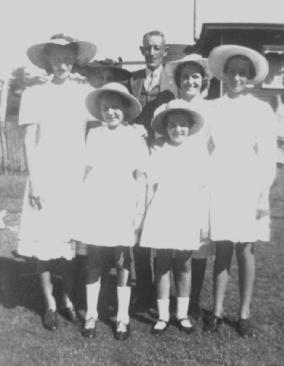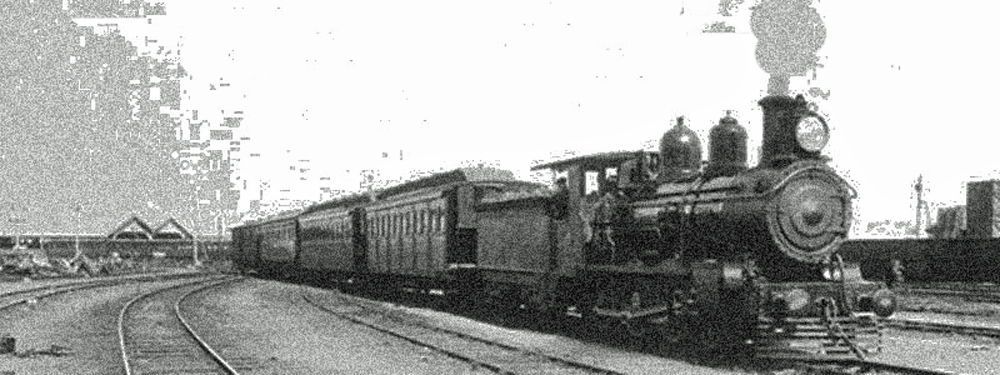 For
most of his working life, Tom was a guard on the railways in
Queensland.
For
most of his working life, Tom was a guard on the railways in
Queensland.This block will be replaced by LeftMenuGaffey (orByrnes) when the page is served from a server.
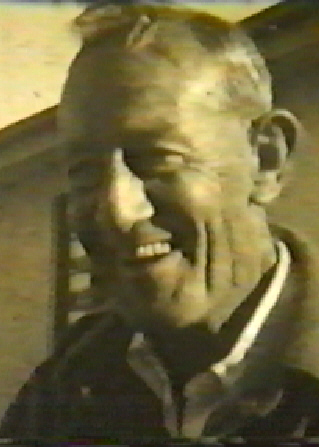
This photo has been taken from a home movie, shot in the 1950s by Thomas's son-in-law Jim Boyle. To see it in the movie, plus a short sequence of Thomas's wife Lily, click here.
Thomas, a railway guard for most of his life, was also a keen athlete - and he wrote about these two facets of his life in a series of memoirs for the Queensland Times, in the 1950s, after he had retired from Queensland Railways.
These memoirs have now been transcribed, and can be read by clicking here:
- Father:
- James Byrnes, b. Wellington, NZ 1857
- Mother:
- "Grace" Sarah Johanna Pobar (b Mar 18 1862, Dalby, Qld
- Birth:
- Oct 19 1883 in Black Gully, Toowoomba, Queensland[1]
- Death:
- July 1973 in Brisbane, Queensland[2]
- Occupation:
- A printer’s assistant, a clerk in his mother’s family’s butchery in Toowoomba (Pobar’s butchers) and train guard with Queensland Railways
- Lived in:
- Toowoomba, Ipswich, Boonah, Brisbane: [19 Kendall Street, East Ipswich (bet 1924 and 1950); Balmoral, Brisbane, (1950-1973)]
- Marriage:
- Amelia (Lily) Dance (St. Mary’s Ipswich 1913)[3]
- Children:
- Mary Byrnes (1913 - 2004)
- Grace Byrnes (1915 - 2004)
- Thomas Byrnes (1916-2010)
- Joan Byrnes (1917- 1986
- Francis Byrnes (1919 - 1995)
- Peter Byrnes (1922-2016), m. Joan Gaffey, 1943 Sydney
- Kathleen Byrnes (1923-2010)
- Margaret Byrnes (1925-2018)
- Eileen Byrnes (1927-2011)
- Teresa Byrnes (1932-2016)
- Clare Byrnes (1934 - 2020)
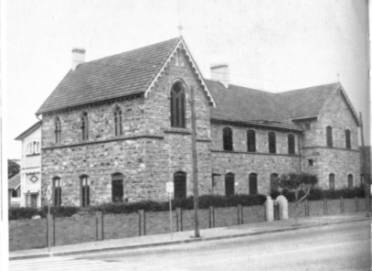
Thomas Byrnes, with 11 children and more than 50 grandchildren and great-grand-children, was the patriarch of a large family.
He was born in 1883 in Black Gully, in the Wilsonton area of north-west Toowoomba where his mother’s family, the Pobars, lived.
Shortly after his birth, Tom was taken to Brisbane, where his father was a compositor with the Government Printing Office. He was educated in Brisbane, first at what was called "the Normal school”,a highly-rated primary school (in inner Brisbane near the intersection of Edward and Adelaide streets), and then to a GPS school, St. Joseph’s College at Gregory Terrace, known to all as “Gregory Terrace” or simply “Terrace” (left).
In later years, Tom recalled that when he was a boy, living with his parents and young brother James at Kangaroo Point, he was an altar boy in his local parish. The parish extended for a considerable distance, and when a new church was opened many miles away at Balmoral, Tom was called on for the ceremony, and he was invited to accompany the parish priest in his sulky for the occasion. This church became the local church for Tom when he retired to Balmoral, some 60 years later.
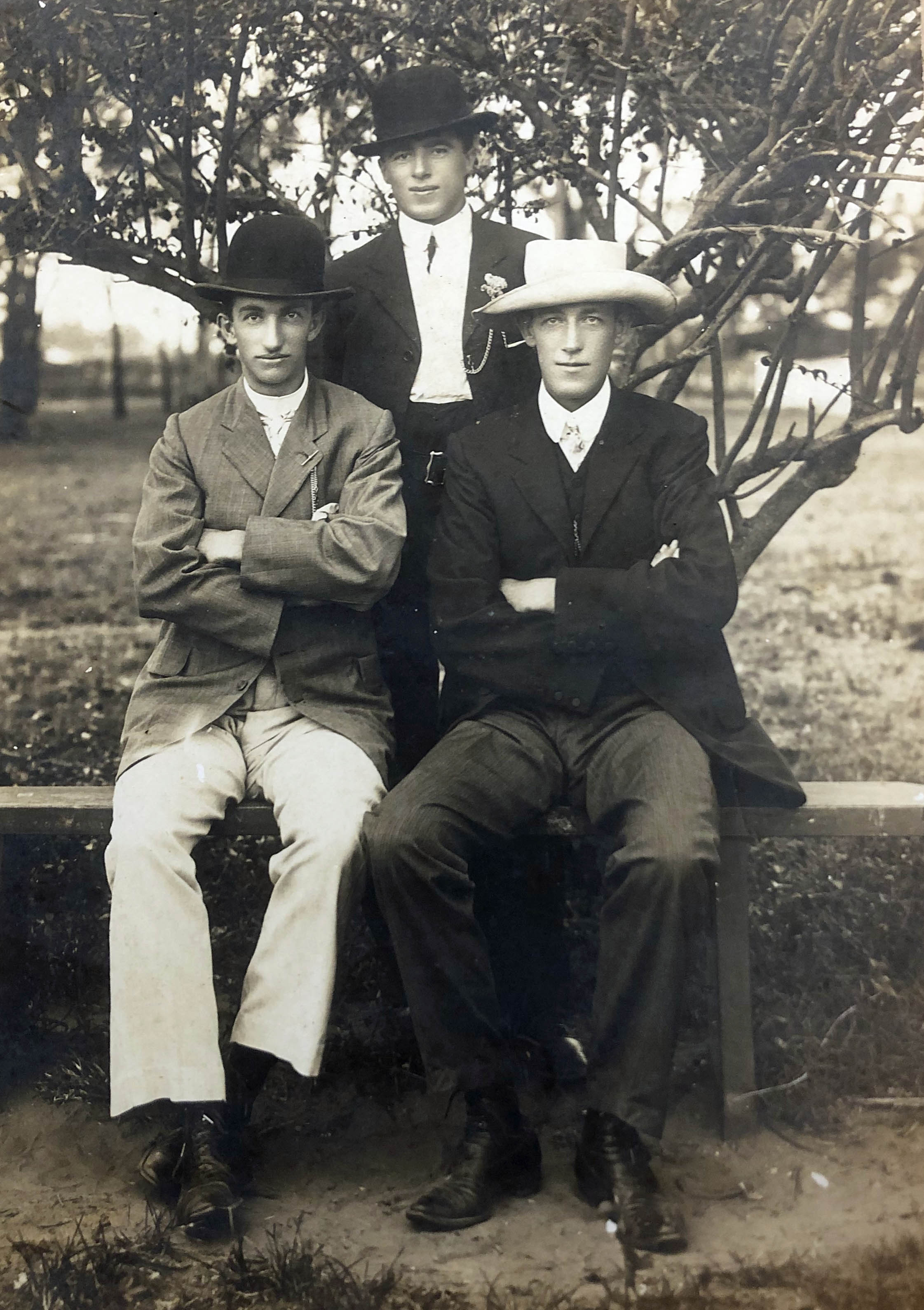
In Marburg, a town composed of settlers of mainly German origin, he met Lily Dance, the daughter and granddaughter of Marburg farmers who, coincidentally, also owned and operated a butcher shop. In reminiscences Tom wrote more than 40 years later for a local newspaper, he recalled that “Marburg was a busy little farming centre. There were two hotels, a butter factory, a police station with a sergeant in charge and a constable, a dance hall, showground and a good brass band.”
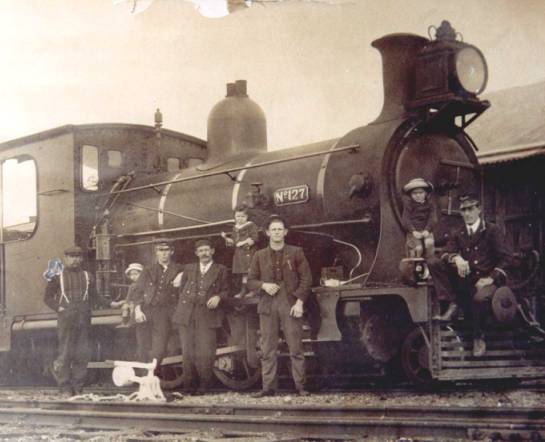
These memoirs are quite remarkable – written as they were in 1952, when Tom was nearly 70 years of age. They show an amazing memory for detail of life, work and sport before and after two World Wars.[5] He was paid a total of £3/13/6 for the series of seven articles.
Life must have been busy then – as well as working long hours with many days away from home, courting Lily when the train took him to Marburg, he was elected as a union branch secretary, a position he held for two years before he was transferred to Boonah.
The construction of the Marburg line, which was so instrumental in the courtship of Tom and Lily had been built after a financial guarantee by the farmers of the Marburg district, including presumably Lily’s father, Bill Dance, a prominent local farmer and businessman. At that time, the principal cargo for the line was sugar cane; the line was built to connect with a private line to a sugar mill.
In 1913, Tom and Lily married in St. Mary’s Church in Ipswich. After the wedding, Tom and Lily lived at Woodend in Ipswich, then moved to the nearby township of Boonah, before settling in the mid 1920s for most of their married life at 19 Kendall Street, East Ipswich. The house was probably bought or built with part of the proceeds of Lily’s bequest from her father, who died in 1924, and as a result, the house remained in Lily’s name.
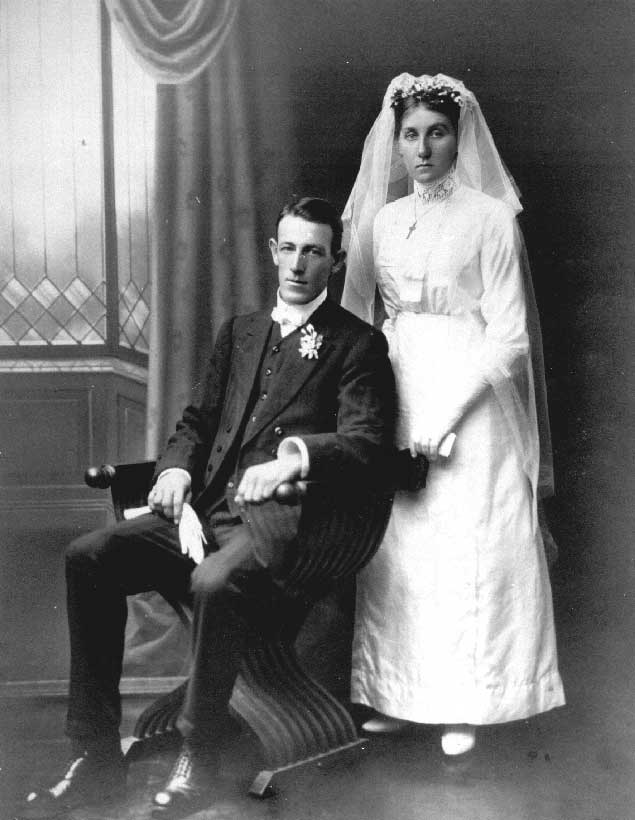
The life of a train guard was vastly different then, with many days and nights away from home. Tom recalled that the accommodation for railwaymen in Toowoomba was very good, large and well-equipped, near the station. He wrote:
Tom was a very strong man, fond of athletics, and represented Queensland in marathon running and later in long distance walking races. "Dad also liked a bet on the horses, but couldn’t afford this until all the children had grown up," his son Peter said.
Thomas reserved the right for himself to name all his children. Towards the end of the line of 11 children, it sometimes took him a long time to decide on the name - some, such as his son Peter, had to make do with only one Christian name.
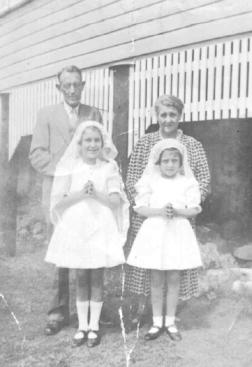
Finally, 30 days after her birth, Clare was named and her birth registered by her father.
(far left): First Communion day for daughters Teresa and Clare.
(left): Tom and five of his daughters, in their Sunday best.
Middle age didn’t stop Tom making what were then lengthy journeys to compete in his favourite sport. In 1926, he was invited, as the only Queenslander, to take part in the first 50-mile walking championship held in Sydney. The field started from Martin Place, in the centre of the city, winding its way out to Upper Bankstown, and return. He returned for a second attempt at this race in 1928, coming in sixth.
From Sun Sporting Pictorial, Brisbane, November 21, 1929:
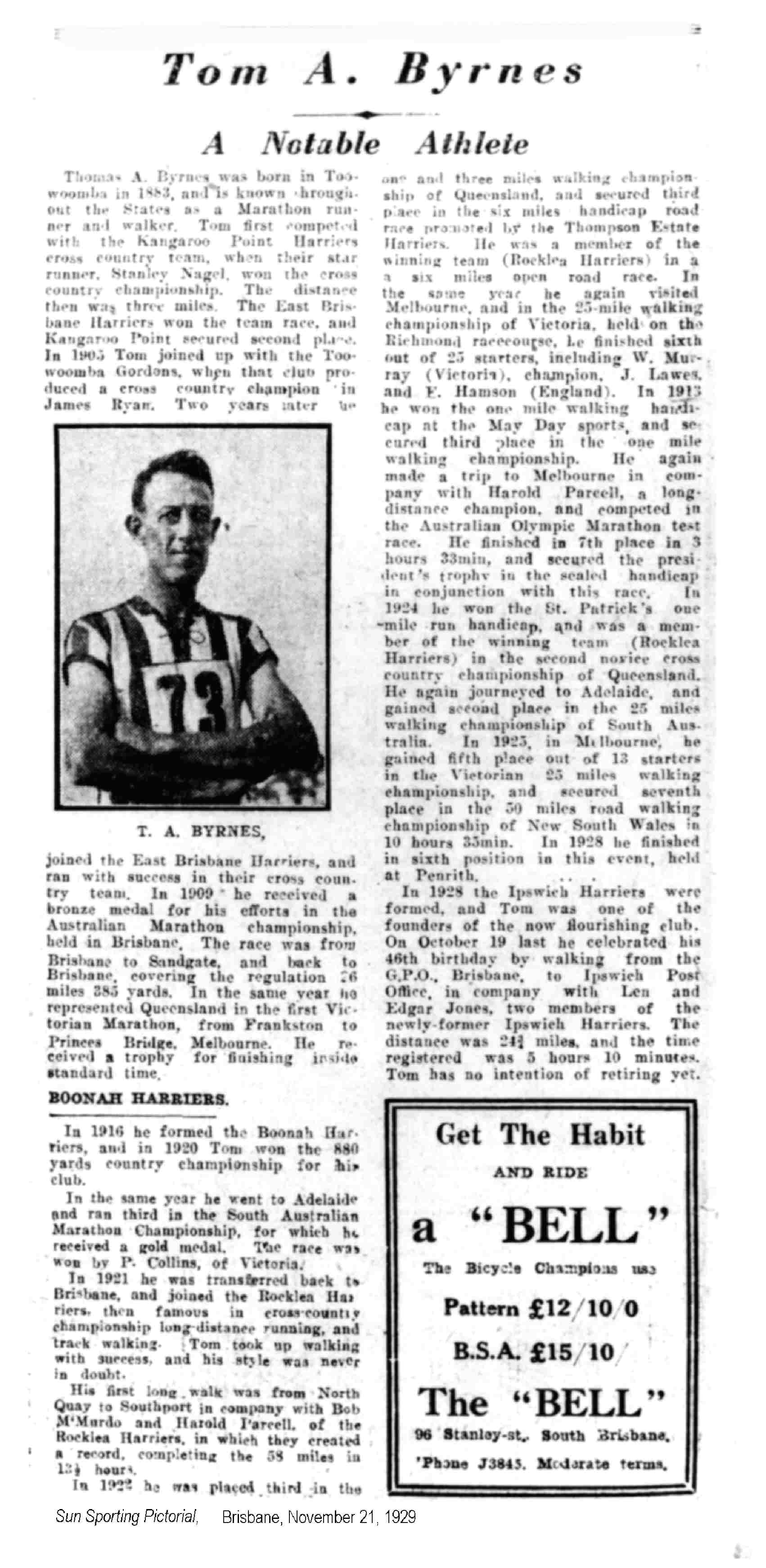
A rift developed between Tom and his mother Grace (Pobar) in the 1930s. Son Peter said his father wasn’t certain what caused it – although he believed it may have been that his mother disapproved of his marriage to a farmer’s daughter, but whatever the cause, Tom was very grieved by it. The family recalls two of Tom's cousins[6] replaced him in his mother’s affections, and, after the death of his father James in 1932, he wasn’t able to see her without one of them being present.
Tom was not told of his mother's death until after her funeral. Peter said it was a very hard day for his father when he heard his mother had already been buried. Grace's will did in fact disinherit Thomas completely in favour of her two nieces, while providing £100 for his brother James.[7]
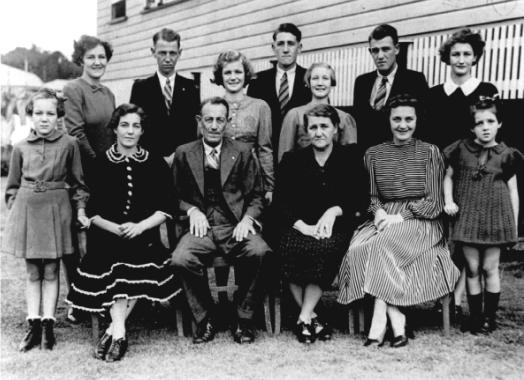
Back row, from left: Joan, Peter, Frank, Tom and Kathleen
Centre: Margaret and Eileen
Front: Teresa, Mary, Thomas & Lily, Grace and C
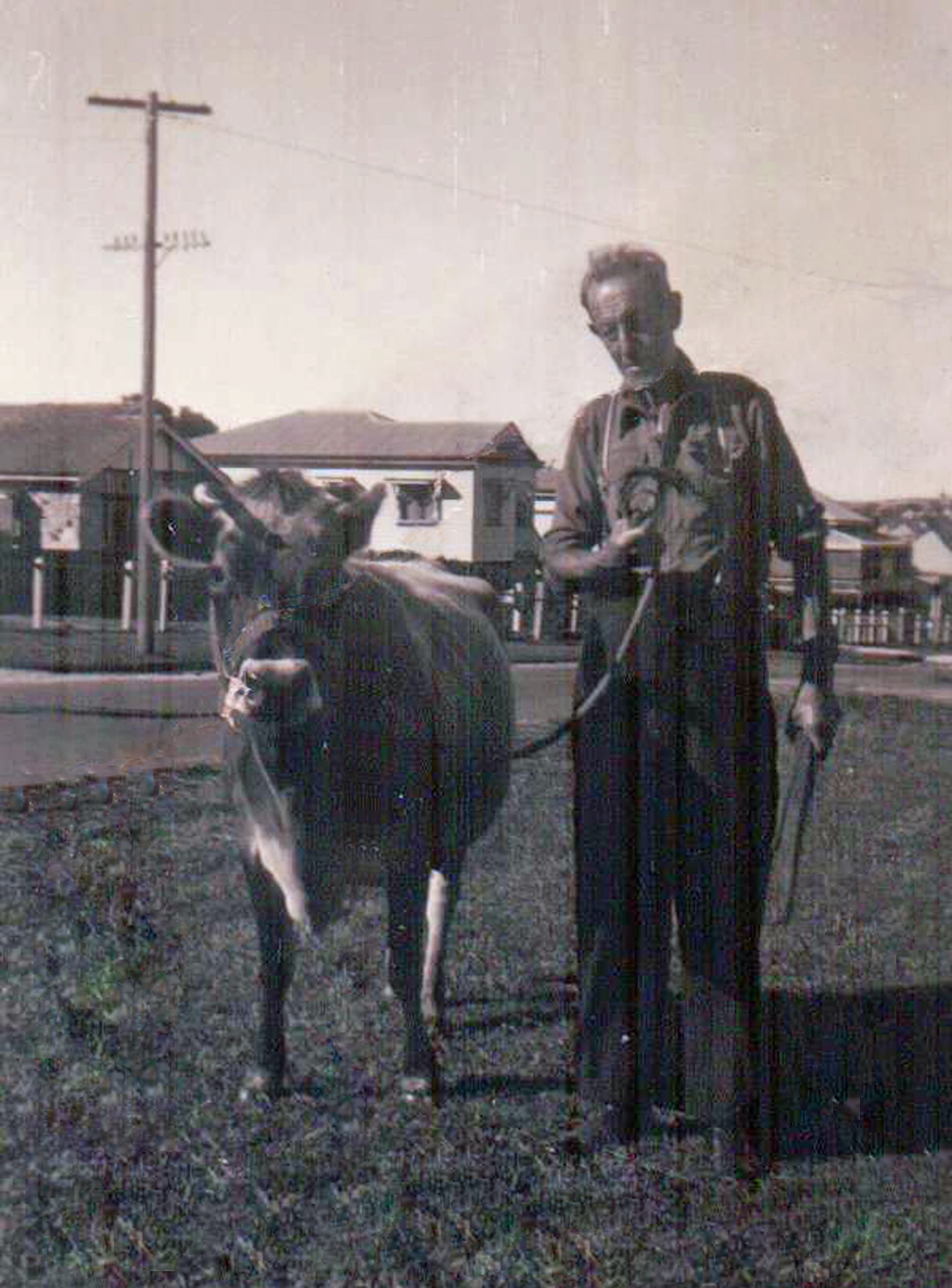
(left): Thomas with the family's cow, outside the house in Kendall Street, East Ipswich
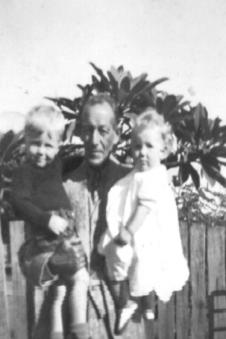 .
.His wife Lily was a farmer's daughter, and milked the cow to provide milk for their large family. Middle son Frank also helped with the daily task of milking.
Tom retired from the railways on New Years Eve, 1949 – but some few years before that, he featured in the rescue of a woman who had fallen from the station platform just as a train arrived. To the everlasting gratitude of the woman, Tom’s swift reaction scooped her from danger, with only shock, a bruised hip and grazing to show for it. The woman, Nora Long, of East Brisbane, wrote to Tom, thanking him and enclosing a lottery ticket, regretting that it was all she had to offer him. Mrs Long said “I thought my days were numbered”.
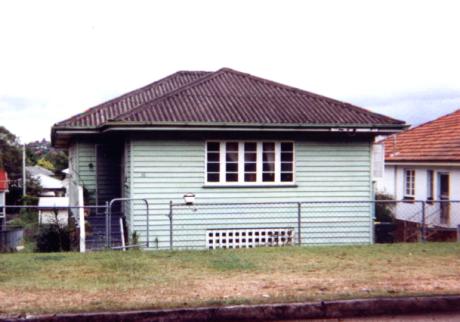
After Tom retired from the railways, the couple left Ipswich and moved to the Brisbane suburb of Balmoral.
(left): The house at 38 Alexandra Street, Balmoral.
In his retirement, Tom spoke up about animal cruelty on the trains transporting animals. in 1953, Brisbane's Truth newspaper launched a campaign against electric batteries being used to control cattle on the freight trains. Tom was quoted as saying:
If a jockey on a racecourse uses a battery, he is sent out for life, yet the racecourse battery is only a miniature, compared to the battery in use by drovers on stock trains.
For the complete article, click here.
[1] Queensland birth certificate - Thomas
[2] Queensland marriage certificate - Thomas and Lily
[3] Queensland death certificate - Thomas
[4] Queensland Times, October 3, 1952
[5] Queensland Times, October 3, 11,18, 24 and 31, (1952)
[6] Gladys Helen Pobar and Veronica Margaret Pobar (the daughters of Grace’s brother Thomas Samuel Pobar).
[7] However, the estate did not have sufficient funds left to provide the full £100. It’s believed the Kangaroo Point house had been assigned before Grace's death to the Pobar girls. (James did divide the amount he received with Tom).
